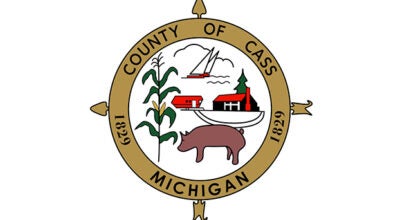MSP sergeant to speak on setting of speed limits
Published 10:19 pm Wednesday, August 8, 2012
Sgt. James Campbell of the Michigan State Police will speak at 7 p.m. Monday at Silver Creek Township Hall about the setting of speed limits on Michigan roads and highways.
And more likely than not, he will be asked about speeds in areas that before 2006 were defined in Michigan’s motor vehicle code as “residential districts.”
That topic has been a “hot button” issue in two of the county’s townships since the Cass County Road Commission removed more than 140 25-mph speed limit signs from residential districts in the county. It was done when it became apparent the law that backed the enforcement of those posted speed limits no longer existed.
Among signs removed were those posted on North Shore Drive on Eagle Lake in Edwardsburg’s Ontwa Township and Garrett Road in Silver Creek Township.
“It has come up predominately in Ontwa and Silver Creek where some citizens were concerned that the signs were removed and were unaware of why,” said Joe Bellina, the road commission’s chief engineer.
Campbell is expected to address 2006 legislation that changed the way speed limits are set. Except for information that county road commissions have had in their possession, there hasn’t been a lot of details available for the public on how speed limits are determined and the reasoning behind the changes, Bellina said.
Prior to 2006, speed limits in residential districts were set at 25 mph across the board. When the Legislature changed the law, it determined that speeds on roadways would be set in one of two ways — either by determining through a study the number of access points (such as driveways) to a highway, or by a traffic study. A traffic study that counts vehicles and their speeds, results in a speed limit based on what 85 percent of the people drive. That is considered to be the maximum safe and reasonable speed.
But the catch in the amended law is that the section of the law that dealt with residential districts was removed.
Campbell explained that before 2006, a residential district was territory contiguous to a highway and not comprising a business district when the frontage on a highway was 300 feet or more and mainly occupied by dwellings and dwellings in use for business. The speed limit in those areas was 25 mph.
“The problem was that someone’s personal house can have 300 feet of roadway which meant that one property could make up a residential district,” he said.
“They went back and looked at what comprises a district, driveways and streets and looked at where the access points were and the percentiles. They found a correlation between the access points and the 85th percentile. That is how they came up with the access points (as the determining factor in setting speeds),” Campbell explained.
According to a memorandum provided to the office of state Sen. John Proos, R-St. Joseph, on July 26 by the research services division of the Legislative Services Bureau, “A highway segment must have 60 or more vehicle access points to have a designated 25 mph speed limit. If there are fewer than 60 but more than 45 access points, the prima facie speed limit is 35 mph.”
In the amended law, the life of 25-mph speed limits in subdivisions is tied to the year those subdivisions were created. The law states that the speed limit is 25 miles an hour “on all highways or parts of highways within the boundaries of land platted under the land division act, 1967, PA 288 … unless a different speed is fixed and posted.”
And that, said Bellina, is where the difficulty with the 25 mph signs arose. Based on the outcome of a later court case, he said, if the land was platted prior to 1967, “you would have to show that all rules (for enforcement) were followed before then. Since that is difficult to prove, land platted before 1967 does not fall under this rule.”
Those signs in residential subdivisions are obsolete if the neighborhoods were platted prior to 1967.
“It is our duty to have proper signage so the enforcement agencies can depend on them, that the signs have the full force of the law behind them. When the definition of residential districts was removed from the law, the legal backing for those signs disappeared and they became unenforceable,” Bellina said.
In lieu of having speed limits in those neighborhoods determined by the number of access points, townships such as Ontwa and Silver Creek do have another option as defined in the amended law. And that is for a committee of three comprised of a representative each from the township, the county road commission and the Michigan State Police to conduct traffic count study and determine the speed. All parties to the study must agree unanimously on the recommended speed limit.
Ontwa, according to Township Clerk Paula Ralph is still investigating its options and has not made a decision. Silver Creek is expected to learn more from Campbell on Monday.
There is an option for the township to petition the road commission to install speed limit signs without a study under very specific circumstances, said Bellina. And those are that the road has to be at least a mile long with residential lots along either side of the roadway for the entire length.
But Campbell said, “That defeats the traffic safety purpose and puts the road commission under the problem of creating a situation that is not as safe as it could be,” he said.
The law does not require that a study be done but the local road commission does have a policy that requires one.






